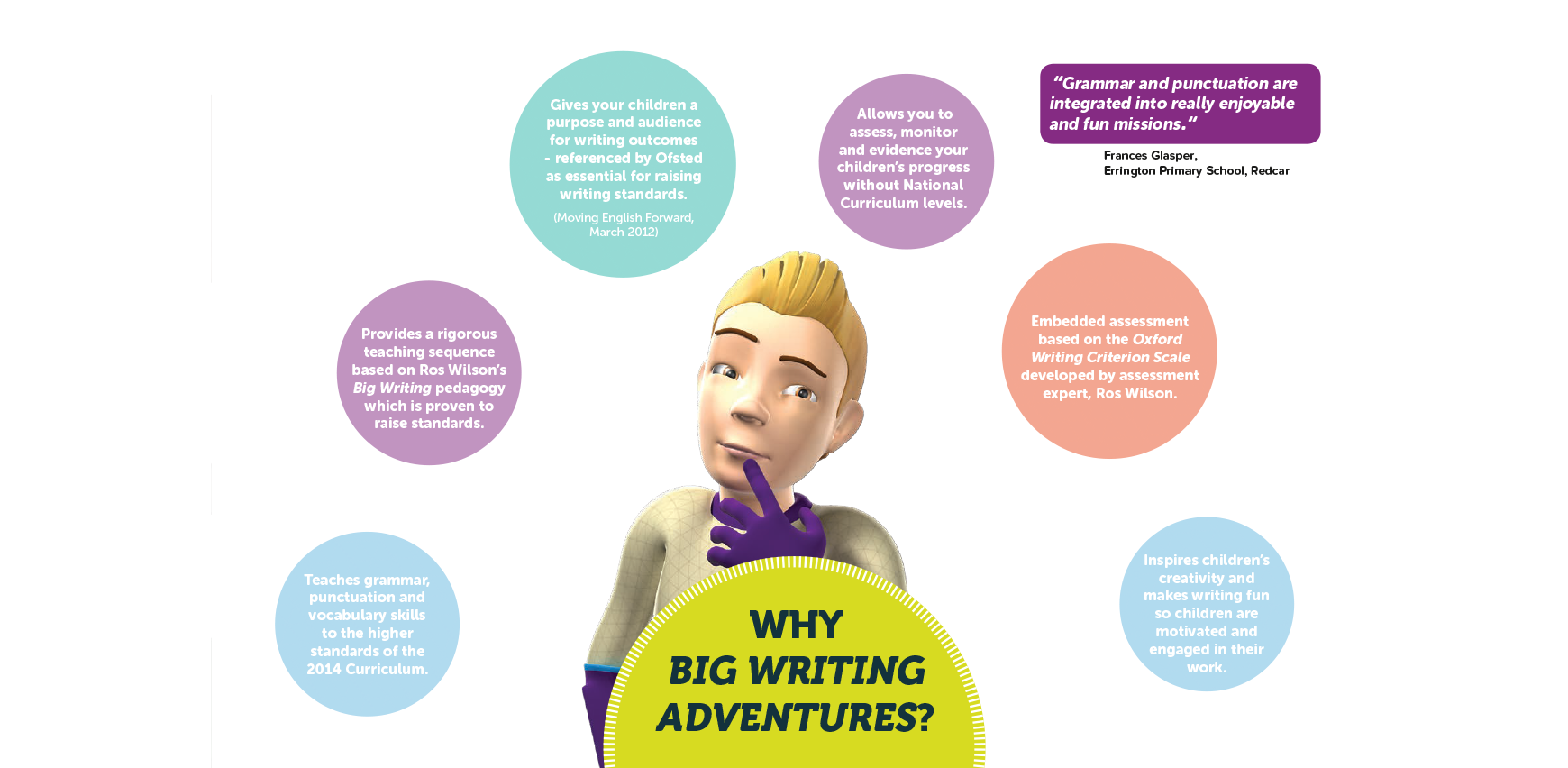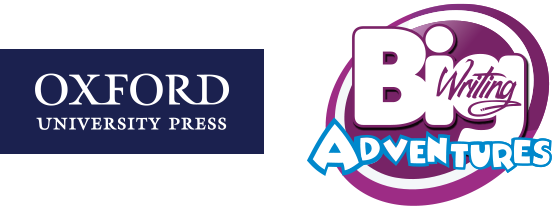
What is Big Writing?
Big Writing is an approach to teaching writing and raising writing standards that focuses on:
- The importance of TALK and oral rehearsal
- Accurate basic skills – spelling, punctuation, grammar, and handwriting.
- Regular and meaningful assessment and target setting.
- High expectations for all pupils.
- Giving writing a purpose and making it fun!
Big Writing was developed to provide schools with a definitive, comprehensive model that ensures both teachers and children know what they can and can’t do, identifying any gaps to accurately inform the next steps in teaching and learning. The Big Writing messages have become commonplace throughout the UK with V.C.O.P. displays and punctuation pyramids appearing in many classrooms.
How Does Big Writing Work?
In Big Writing, the full range of writing skills is called the Writer’s Toolkit and can be summarised as ‘The Two WHATS and the Two HOWS’:
WHAT 1: The text type or genre to be written.
WHAT 2: The stimulus or purpose for writing.
HOW 1: Basic Skills: GHaSP.
HOW 2: ‘Writing Voice’
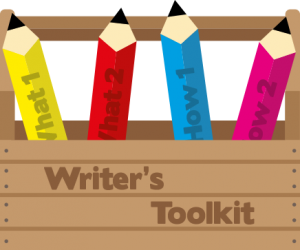
Successful writing is like ballet. It is only when all the steps have been learnt, the sequences have been rehearsed and re-rehearsed, the techniques have been honed and the performer has brought them all together in a wonderful interpretation of performance, that the abilities of the dancer (or the writer) can be truly judged!
Oxford Primary Writing Assessment
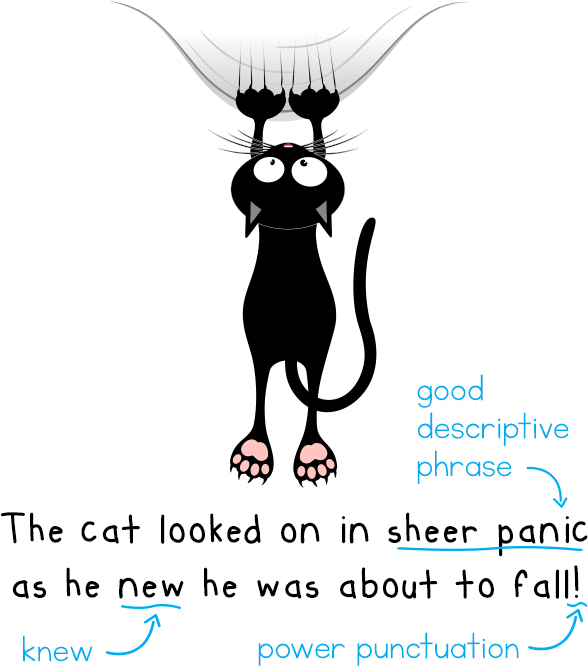
HOW 1: Basic Skills
Most schools are confident in teaching the two WHATs. Big Writing provides schools with a framework for teaching the two HOWs through lively, fun, focused activities and a weekly opportunity for children to apply their skills in an extended writing task.
The four basic skills that children must draw upon with increasing automaticity and fluency in their writing are:
- Grammar – the use of correct grammar/standard English at all times;
- Handwriting – accurate, fast, and flowing, preferably using a cursive style. At a minimum, handwriting should be neat and legible;
- Spelling – accurate in all sight words and the majority of ambitious vocabulary, as well as demonstrating the full range of phonic strategies; and
- Punctuation – accurate use of all sentence punctuation and creative but accurate use of a wide range of punctuation for ‘voice’ and effect.
HOW 2: Writing Voice
The writer’s voice defines both the language the writer uses and the style with which he or she structures sentences. In Big Writing it is taught through V.C.O.P. which is:
- Vocabulary – The range of vocabulary the child has and can use, including ambitious vocabulary (Wow Words!);
- Connectives – The use of a wide range of connectives including conjunctions, connecting adverbs, and prepositions;
- Openers – The range of ways a child has for opening sentences, including the use of the three Power Openers (connectives, ‘ly’ words, and ‘ing’ words); and
- Punctuation – The range of punctuation the child uses, including punctuation for effect or Power Punctuation (? ! …).


The Big Write
The Big Write, an independent period of extended writing, is possibly one of the most well known techniques in the UK to encourage pupils to produce a standard of writing that the teacher can accurately assess from.
The length of time a class spends on their Big Write depends on their age but all follow the same routine when preparing for it:
- Talk homework the night before – for children to discuss and prepare (mentally) what they are going to write about
- First half of their Big Write – fast, fun work on correct use of vocabulary, connective, sentence openers and punctuation (V.C.O.P.). This is also a great oppurtunity for pupils to use and apply previously taught grammar to gain increasing accuracy and understanding.
- 10-15 minutes play time
- After play the children write individually, in silence, with an atmosphere that supports both concentration and creativity.
If a child can’t say it, they can’t write it!
Ros Wilson
Assessment and The Oxford Writing Criterion Scale
The Oxford Writing Criterion Scale (OWCS) is at the heart of the Big Writing approach. The OWCS is designed to enable accurate, objective summative assessment of writing and to identify the next steps for a child in order for them to make progress.
The OWCS is organised into a series of Standards that map to the primary year groups, from Standard 1 (Reception/P1) through to Standard 7 (Year 6/P7).
Each Standard sets out a number of criteria against which children are assessed. The strands of writing that the criteria are assessing are:
- features of text type/genre
- handwriting
- spelling
- grammar
- punctuation
- writer’s voice
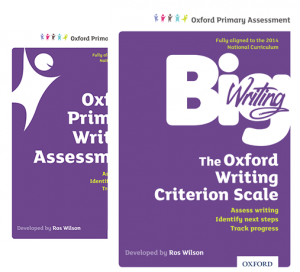
As ‘Writing Agents’ your class will be assigned a series of exciting writing missions from a range of characters.
You’ll find rich front-of-class content, comprehensive teacher’s guidance and embedded assessment delivered via an easy-to-use online service.
All underpinned by the proven Big Writing pedagogy that is guaranteed to raise writing standards across your whole school.
